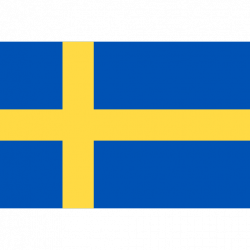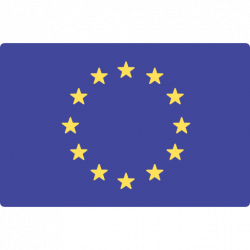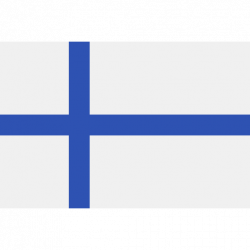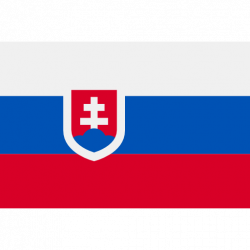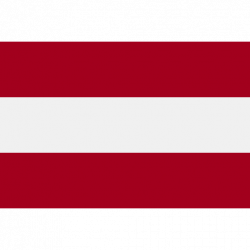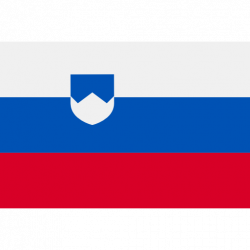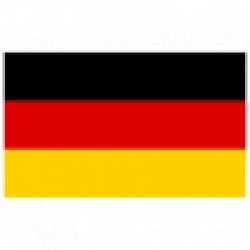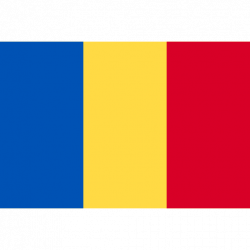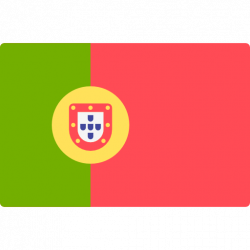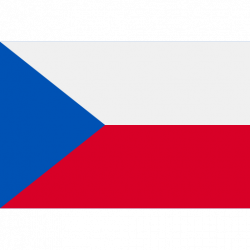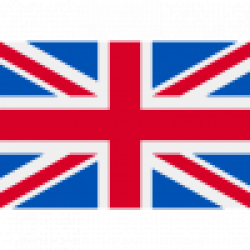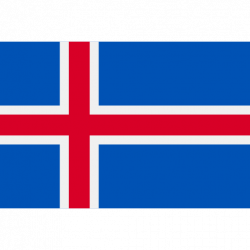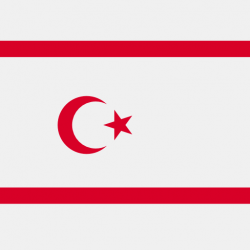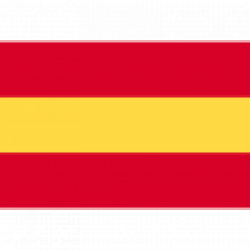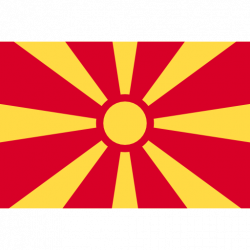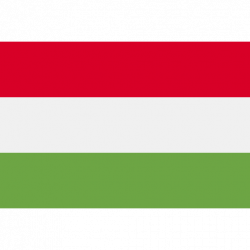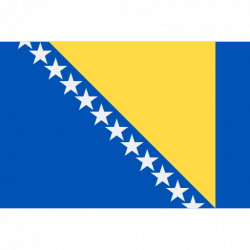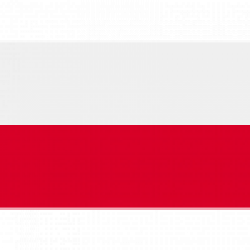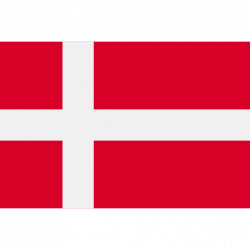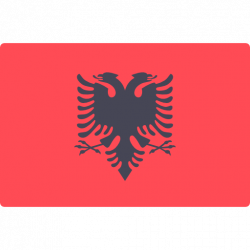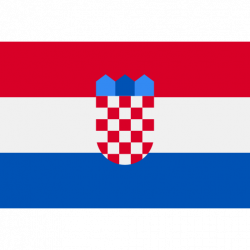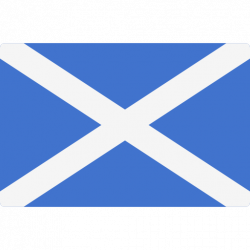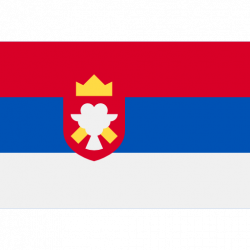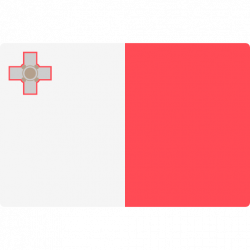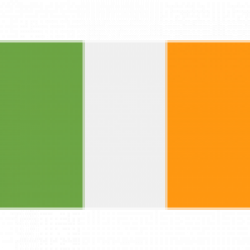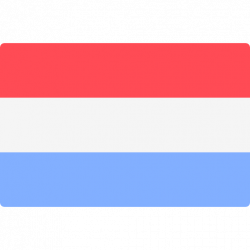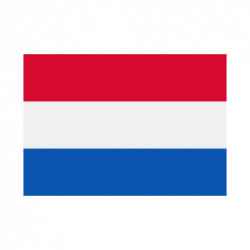1981: Sweden, Legal Recognition of Swedish Sign Language
Swedish Sign Language (Svenskt teckenspråk or SSL) is the sign language used in Sweden. It is recognized by the Swedish government as the country's official sign language, and hearing parents of deaf individuals are entitled to access state-sponsored classes that facilitate their learning of SSL. There are fewer than 10,000 speakers, making the language officially endangered.
Source: https://en.wikipedia.org/wiki/Swedish_Sign_Language
"In May 1981, the Swedish Parliament decided that: “deaf have to be bilingual to function amongst themselves and in society. Bilingualism on their part means that they have to be fluent in their visual/gestural language and in the language that surrounds them, Swedish.” This decision is recognised as acceptance that Swedish Sign Language is the first language of Swedish deaf people.
Per the Education Act 1998, deaf children are expected to be able to write in Swedish and English, in addition to expressing their thoughts in Swedish Sign Language. Thus, six state-run schools (one of which specializes in learning disabilities) have been established regionally for deaf children who cannot attend traditional comprehensive schools."
Source: https://rm.coe.int/16805a2a1a
1988: European Parliament Resolution on Sign Languages
On 17 June 1988, the European Parliament unanimously approved a resolution about sign languages on 17 June 1988. The resolution suggests that all member states recognise their sign languages as official languages of the Deaf community.
The European Parliament [...] calls on the Commission to make a proposal to the Council concerning official recognition of the sign language used by deaf people in each Member State.
1995: Lithuania, Legal Recognition of Lithuanian Sign Language
On May 4, 1995, The Government of the Republic of Lithuania has officially recognized Lithuanian Sign Language as the native language of the deaf.
"Lithuanian Sign Language (LGK, Lithuanian: Lietuvių gestų kalba) is the national sign language used in Lithuania, with several regional variants.
Very little is known about its history before 1945. From 1945 to 1990 it was used along with Russian Sign Language and the two sign languages became very similar. Russian lip-patterns used with some LGK signs indicate that the sign may have been originally borrowed from Russian Sign Language.
When Lithuania became independent, its contacts with Russian Sign Language were almost cut off, and now it's developing as an independent language, with some influence from international signs.
Linguistic research of LGK started in 1996, when it was recognized as the native language of the Deaf."
Source: https://en.wikipedia.org/wiki/Lithuanian_Sign_Language
1995: Finland, Legal Recognition of Finnish Sign Language
Finnish Sign Language was recognised in the constitution in August 1995:
Section 17 - Right to one's language and culture [...] The rights of persons using sign language and of persons in need of interpretation or translation aid owing to disability shall be guaranteed by an Act.
1995: Slovakia, Legal Recognition of Slovak Sign Language
The National Council of the Slovak Republic passed a law recognizing "Sign Language as a language of communication of the Deaf"
Slovakia has a separate Law on the Sign Language of the Deaf. The Slovak Union of the Deaf and Hard of Hearing was mainly involved in drafting this law. It took over three years of fighting until the law was passed in 1995.
It recognises sign language as the language of the Deaf:
Par.3 Sign Language
(1) the language of communication of the Deaf is sign language.
Further, it states that sign language is a natural visual-movement "language system" and gives Deaf people the right to use it:
Par. 4 Deaf people are entitled) the use of sign language.
Additionally, according to the law, Deaf people have the right to education in sign language (par4(b))."
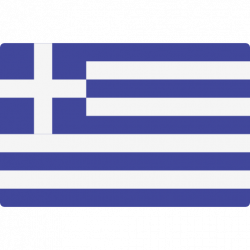
2000: Greece, Legal Recognition of Greek Sign Language
Greek Sign Language was legally recognised as the official language of the Deaf Community in Greece by Law 2817 in 2000.
2000: Latvia, Legal Recognition of Latvian Sign Language
"Latvian Sign Language (Latvian: latviešu zīmju valoda) is a sign language commonly used by deaf people in Latvia. Linguists use LSL as an acronym for Latvian Sign Language.
The Official Language Law of 9 December 1999, which came into force on 1 September 2000, gave Latvian Sign Language a legal status in Section 3.3, which stipulates: 'The State shall ensure the development and use of the Latvian sign language for communication with people with impaired hearing."
2002, 2019: Slovenia, Legal Recognition of Slovenian Sign Language
"18 April 2019 - The government endorsed the proposal to set down the Slovenian sign language as an official language in the constitution on Thursday, starting the procedure of enabling the Slovenian deaf and hearing-impaired community to fully exercise their basic human rights.
Labour Minister Ksenija Klampfer welcomed the decision, saying that the deaf and hearing-impaired considered the sign language their native language and that its status needed to be regulated.
"Communication and language as well as the right to their use are essential for social inclusion and implementation of the basic human rights. Without communication an individual cannot fully participate in the society," said the minister.
The sign language will be thus recognised as one of the official languages in the constitution pending approval by the National Assembly. Simultaneous interpretation of government statements into the sign language has already been standard practice at press conferences."
"The law on the use of the Slovenian sign language from 2002 gives the children the right to have an interpreter to a limited extent, but it does not grant the language the necessary status."
Source: https://www.total-slovenia-news.com/news/page-255?sa=U&ved=658
"A year after endorsing in principle a proposal to enter the Slovenian sign language into the constitution, the parliamentary Constitutional Commission met on Thursday to continue the debate, only to suspend it again to clarify a proposal to also include the Hungarian and Italian sign languages."
Source: https://english.sta.si/2628169/government-adopts-proposal-to-enter-sign-language-into-constitution
2002: Germany, Legal Recognition of German Sign Language
"German Sign Language or Deutsche Gebärdensprache (DGS), is the sign language of the deaf community in Germany and in the German-speaking community of Belgium. The language has evolved through use in deaf communities over hundreds of years.
German Sign Language was first legally recognised in The Federal Disability Equality Act (2002) in May 2002. Since then, deaf people have a legal entitlement to Sign Language interpreters when communicating with federal authorities, free of charge."
2002: Romania, Legal Recognition of Romanian Sign Language
Romanian Sign Language (Romanian: Limba semnelor române or LSR) is the sign language used by deaf people in Romania.
... still looking for more information...
1997: Portugal, Legal Recognition of Portuguese Sign Language
Portuguese Sign language (Portuguese: Língua gestual portuguesa) is a sign language used mainly by deaf people in Portugal.
It is recognized in the present Constitution of Portugal. It was significantly influenced by Swedish Sign Language, through a Swedish school for the Deaf that was established in Lisbon."
Source: https://en.wikipedia.org/wiki/Portuguese_Sign_Language.
"The revised Constitution was published 20 September 1997, with PSL included in Article 74, Education:
In the implementation of its policy for education, it is the duty of the State:
- To protect and value the Portuguese Sign Language as cultural expression and instrument of access to education and equality of opportunities."
1998: Czech Republic, Legal Recognition of Czech Sign Language
In 1998, the Czech parliament passed a bill that Czech Sign Language was officially recognized as the first language of the Deaf people in Czech Republic.
Deaf people have the right to get 24-hour sign language interpreting service at no charge. Deaf children have the right to get education in their native sign language. In addition, under the law, parents of deaf children have the right to attend sign language classes at no charge. Although, the law didn't include the interpreting in high schools, universities, and courts.
2003: UK, Legal Recognition of British Sign Language
British Sign Language (BSL) is an official minority language of the UK, recognised on 18th March 2003.
https://www.bslzone.co.uk/watch/battle-bsl
Documentary. The Battle for BSL (BSL and English subtitles) looks at how BSL was first identified and how the language's status has developed since. Among other key events, it includes the BSL marches that led to BSL recognition in 2003, and the landmark BSL (Scotland) Bill which was passed in 2015.
It is presented by Clark Denmark and features prominent Deaf people such as Lilian Lawson and Gerry Hughes.
This documentary was directed by Louis Neethling and was produced by AC2.com Productions.
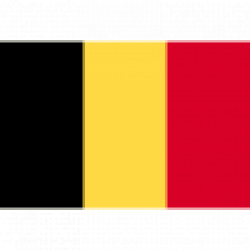
2003: Walloon - Belgium, Legal Recognition of French Belgian Sign Language
Belgium's Parliament of the French Community recognised French Belgian Sign Language (LSFB) by decree in October 2003. The recognition entails:
- cultural (symbolic) recognition
- the formation of a commission to advise the Government of the French Communityin all LSFB-related matters
According to the Décret relatif à la reconnaissance de la langue des signes (Decree on the Recognition of Sign Language), "It concerns a symbolic recognition that goes hand-in-hand with a general measure, permitting every minister to take action in fields relative to his authority."
2004: Iceland, Legal Recognition of Icelandic Sign Language
Icelandic Sign Language was recognised by law in education in 2004:
Sign language is of basic importance for the development of language, personality and thinking of deaf children. For the deaf, sign language is the most important source of knowledge and their route to participation in Icelandic culture and the culture of the deaf. Sign language is of great importance for all school work and for the pupils' life and work.
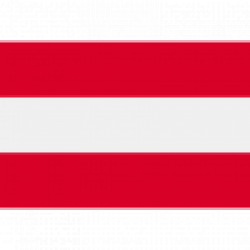
2005: Austria, Legal Recognition of Austrian Sign Language
Austrian Sign Language (Österreichische Gebärdensprache, or ÖGS) was recognised by the Austrian Parliament in 2005.
On 1 September 2005, the Constitution of Austria was amended to include a new article: §8 (3) Die Österreichische Gebärdensprache ist als eigenständige Sprache anerkannt. Das Nähere bestimmen die Gesetze. ("Austrian Sign Language is recognised as an independent language. The laws will determine the details.")
2006: Cyprus, Legal Recognition of Cypriot Sign Language
Cyprus or Cypriot Sign Language (Greek: Κυπριακή Νοηματική Γλώσσα) is an incipient sign language of Cyprus.
It appears to be a pidgin of American Sign Language and Greek Sign Language, not yet a fully developed language.
The Greek Cypriot deaf community predominantly uses the Greek Sign Language (the Turkish Cypriot deaf community uses the Turkish Sign Language)."
2006: Flanders - Belgium: Legal Recognition of Flemish Sign Language
Flemish Sign Language (Dutch: Vlaamse Gebarentaal or VGT) was recognised on 24 April 2006 by the Flemish Parliament. The recognition entails:
- a cultural (symbolic) recognition
- the formation of a commission to advise the Flemish government on all VGT-related matters
- funding of VGT research and development
Cultural recognition entails that the Flemish Government recognises the Flemish Sign Language as the language of the Deaf Community in Flanders. This 'recognition' encompasses the following three meanings:
(1) the Flemish Government acknowledges the correctness of the fact that the Flemish Sign Language is the language of the Deaf Community in Flanders,
(2) the Flemish Government also accepts the existence of this language in the judicial domain and treats it accordingly and
(3) the Flemish Government expresses its respect for this language.
2007: Spain, Legal Recognition of Spanish and Catalan Sign Languages
On June 28, 2007, Spanish and Catalan Sign Languages were recognised by the Spanish Parliament to be official languages in Spain.
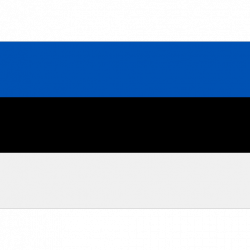
2007: Estonia, Legal Recognition of Estonian Sign Language
Estonian Sign Language was officially recognised on 1 March 2007.
The Language Act recognises Estonian Sign Language (eesti viipekeel, EVK) as an independent language: not using 'sign language' as a generic term. It notes that signed Estonian is a mode of the Estonian (spoken) language (par. 1(3)):
(3) Estonian Sign Language is an independent language and signed Estonian language is a mode of the Estonian language.
Further, it states (Par1(4)):
(4) The state shall promote the use and development of the Estonian language, Estonian Sign Language and signed Estonian language.
Par. 2 "Scope of Application" mentions Estonian Sign Language again, explicitly stating that the Act regulates the Estonian language and the use of Estonian Sign Language, along with 'foreign languages', i.e. minority languages. The Language Act accords Estonian Sign language similar status as the surrounding spoken language, separating it from other minority languages in the country. (..)
2009: Macedonia, Legal Recognition of Macedonian Sign Language
"The Macedonian sign language (Macedonian: македонски знаковен јазик, romanized: makedonski znakoven jazik or македонски гестовен јазик, makedonski gestoven jazik) is the sign language of the deaf community in North Macedonia.
The Macedonian Sign language is regulated by a national law on 21 August 2009. The Macedonian law defines it as following:
The Sign language, according to this law, is recognised as a natural way of communication, equal to the oral communication. The Sign language is a language that is used for mutual understanding between the people with hearing impairment, i.e. it is a natural means of communication among these and other physical and juridical people. The language is a visual system of signs, that understands special positions, directions and movements of hands and fingers and mimicry on the face.
However, the law includes several things, such as: defining the language itself, the rights of the deaf people of North Macedonia, studying the language and preparing adequate interpreters, it defines the tasks of the National Association of Deaf People of North Macedonia and its financing and it secures proper implementation of the right of the deaf people. Basically, each individual is allowed to request a Sign language interpreter and the institution where such request has been made, or the individual itself, is obliged to find one."
Source: https://en.wikipedia.org/wiki/Macedonian_Sign_Language
2009: Hungary, Legal Recognition of Hungarian Sign Language
"Hungarian Sign Language is the sign language of deaf people in Hungary.
There is historical evidence that Hungarian and Austrian Sign Language are related, but Bickford (2005) found that Hungarian, Slovak, and Czech Sign formed a cluster with Romanian, Bulgarian, and Polish Sign rather than with Austrian.
In November 2009 the Hungarian Parliament unanimously passed an act on Hungarian Sign Language and the protection of Hungarian Sign Language."
Source: https://en.wikipedia.org/wiki/Hungarian_Sign_Language
2009: Bosnia and Herzegovina: Legal Recognition of Sign Language
"In Bosnia and Herzegovina, the deaf have the same language rights with sign language as the hearing do with oral language. Interpreters must be provided between sign and Serbo-Croatian for deaf people dealing with government bodies, and government television broadcasts must be translated into sign language.
A Commission for the Sign Language is composed of members representing education, linguistics/pedagogy, and the three constituent nations of Bosnia.
By law, Croatian Radiotelevision is to promote the translation of programs into sign language. In Kosovo, sign-language interpreters appear on television newscasts."
Source: https://en.wikipedia.org/wiki/Yugoslav_Sign_Language
2011: Iceland, Legal Recognition of Icelandic Sign Language
In June 2011, Icelandic Sign Language was officially recognized as a first language. The law now states that Icelandic Sign Language is the first language of those who must rely on it for expression and communication, and of their children. The government authorities shall nurture and support it.
All those who need to use Icelandic Sign Language shall have the opportunity to learn and use Icelandic Sign language as soon as their language acquisition process begins, or from the time when deafness, hearing impairment or deaf-blindness is diagnosed. Their immediate family members shall have the same right.
In no.61/2011 under Article 3 it states that, "Icelandic sign language is the first language of those who have to rely on it for expression and communication, and of their children. The government authorities shall nurture and support it. All those who need to use sign language shall have the opportunity to learn and use Icelandic sign language as soon as their language acquisition process begins, or from the time when deafness, hearing impairment or deaf-blindness is diagnosed. Their immediate family members shall have the same right."
Article 5 of the Act also ensures that the government must promote all aspects of education and awareness in regards to Icelandic Sign Language.
Article 7 appoints the Icelandic Sign Language Committee whose role it is to give advice to the government regarding the implementation of regulations for Icelandic Sign Language.
Article 13 provides that all who need Icelandic Sign Language services will have access to them.
2011: Poland, Legal Recognition of Polish Sign Language
"Polish Sign Language ("Polski Język Migowy", PJM) is the language of the Deaf community in Poland. It descends from German Sign Language.
Its lexicon and grammar are distinct from the Polish language, although there is a manually coded version of Polish known as System Językowo-Migowy (SJM, or Signed Polish), which is often used by interpreters on television and by teachers in schools.
It was first formed/became prevalent around 1817. Around that time the Instytut Głuchoniemych(Institute for the deaf) was founded by Jakub Falkowski, who began teaching deaf children after meeting a deaf boy by the name of Piotr Gąsowski.
Polish Sign Language uses a distintive one-handed manual alphabet based on the alphabet used in Old French Sign Language.
In 2012, under the "Sign Language Act", the language received official status in Poland and can be chosen as the language of instruction by those who require it."
2014: Denmark, Legal Recognition of Danish Sign Language
On May 13, 2014, Danish sign language was recognized as equivalent to the Danish language by an overwhelming majority in The Danish Parliament.
The Danish Parliament established the Danish Sign Language Council "to devise principles and guidelines for the monitoring of the Danish sign language and offer advice and information on the Danish sign language."
2014: Albania, Legal Recognition of Albanian Sign Language
In 2014, Albanian Sign language was legally recognized.
"Albanian Sign Language (AlbSL, Albanian: Gjuha e Shenjave Shqipe) is one of the deaf sign languages of Europe. It is unrelated to other sign languages of the Balkans.
It is relatively young, having developed primarily since the collapse of Communism in 1990. During the communist era, deaf people did not associate with each other on a regular basis. Their communication was primarily with hearing people, and so was strongly influenced by Albanian, with extensive use of fingerspelling and initialized signs, along with some gestures borrowed from hearing people.
After the collapse of communism, deaf people began to congregate and a fully-fledged sign language developed. They invented new signs to replace the former use of fingerspelling, and also came into contact with International Sign and other European sign languages, resulting in numerous loan words. The language continues to change rapidly, with innovations tending to radiate from the capital, Tirana, to rural areas."
2015: Croatia, Legal Recognition of Croatian Sign Language
"Croatian sign language (Hrvatski znakovni jezik, HZJ) is a sign language of the deaf community in Croatia. It has in the past been regarded as a dialect of Yugoslav Sign Language, although the dialectical diversity of the former Yugoslavia has not been assessed.
(..)
In 2004, a project to establish a grammar of HZJ was started by researchers at Purdue University and the University of Zagreb.
By law Croatian Radiotelevision is to promote the translation of programs into HZJ. Major centres of education in HZJ are found in Zagreb, Split, and Osijek."
2015: British Sign Language (Scotland) Bill passed unanimously
On Thursday 17 September 2015 the British Sign Language (BSL) (Scotland) Bill was passed unanimously by all Parties in the Chamber in the Scottish Parliament, Edinburgh.
This new Act will work towards improving the daily life of the Scottish Deaf population and could shake up where the Deaf community choose to call home.
BSL users in Scotland from the cradle to the grave will be greatly affected by the BSL (Scotland) Bill. This recognition of their first and preferred language will improve their access, inclusion and sense of belonging in Scotland. In terms of education, the younger generation of the Deaf community will now be entitled to equal opportunities, and therefore be able to cultivate similar beliefs about their future to their hearing peers which is a very important goal for BDA.
The BSL (Scotland) Bill will also positively impact quality of life in relation to health, the elderly, employment, leisure and arts. In terms of health, Deaf people will have better access to medical care, for example, hospital information leaflets will have to be translated into BSL. From a jobs and employment perspective, more Deaf people will be able to access work as BSL, and the use of BSL Interpreters, becomes more visible and more employers learn about relevant support programmes.
https://www.bslzone.co.uk/watch/battle-bsl
Documentary. The Battle for BSL (BSL and English subtitles) looks at how BSL was first identified and how the language's status has developed since. Among other key events, it includes the BSL marches that led to BSL recognition in 2003, and the landmark BSL (Scotland) Bill which was passed in 2015. It is presented by Clark Denmark and features prominent Deaf people such as Lilian Lawson and Gerry Hughes.
This documentary was directed by Louis Neethling and was produced by AC2.com Productions.
2015: Serbia, Legal Recognition of Serbian Sign Language
Serbian Sign Language has been approved by the Serbian Parliament on 28 April 2015.
The Assembly of the Republic of Serbia sat in parliament on the 28th of April, 2015 and adopted the ‘Law on the use of Sign Language'. Despite 30 amendments being made, 164 of the 166 members of parliament voted in favour of the law, while 2 abstained. The National Radio and Television of Serbia provided a live broadcast, with sign language interpretation, of all the interventions and associated amendments discussed in chamber up until the vote took place.
2016: Malta, Legal Recognition of Maltese Sign Language
Maltese Sign Language (Maltese: Lingwa tas-Sinjali Maltija, or LSM) was officially recognised by the Parliament of Malta in March 2016.
2017: Ireland, Legal Recognition of Irish Sign Language
The Recognition of Irish Sign Language for the Deaf Community Bill 2016 passed the Irish Parliament on 14 December 2017, and was signed into law by President Michael D. Higgins on 24 December of that year.
Before 2017, there was no automatic right for deaf people to have an ISL interpreter except for criminal-court proceedings. ISL recognition provides more legal rights and better access to public services, including education, healthcare, media and banking.
2018: Luxembourg, Legal Recognition of Luxembourg Sign Language
"On Monday 22 May 2017, minister Cahen submitted a bill to parliament to make German sign language an official language of the grand duchy of Luxembourg. The bill will give deaf or hard of hearing the right to an interpreter when they deal with state administrative bodies, if approved.
It will also state the right for every deaf or hard of hearing child to attend classes in sign language in primary and secondary school, whether in a specialised or at an ordinary school. (..)
The bill states that sign language is different from the language (LUG) currently being taught in Luxembourg schools. Sign languages evolved naturally and have not been “invented” by any one person. (..)
The German sign language was chosen because the current “Deutsche Gebärdensprache” (DSG) is used by the majority of the community, and follows the recommendations by Daaflux and experts and NGOs in the field.'
2020: The Netherlands, Legal Recognition of the Sign Language of the Netherlands
"Tuesday 22 September, the Senate of the Dutch Parliament voted about the Law recognition Sign Language of the Netherlands. It was approved unanimously. With this law, Sign Language of the Netherlands (NGT, Nederlandse Gebarentaal) becomes an official language in the Netherlands, next to Dutch and Frisian.
(..)
There aren’t many European countries who needed to wait this long for legal recognition of their national sign language(s), so the long awaited legal recognition is more than just a significant milestone. During the last 30 years the question of the legal recognition of NGT has repeatedly been raised, but the choice was always made to approach this recognition pragmatically, and to focus on the societal and political aspects of the recognition. And with success, because there are quite a lot of provisions for deaf people and NGT in the Netherlands that are very well regulated, in legislation and in policy. But up to today, the legal part of the recognition was missing. That amounts to not recognizing deaf people, and without legal recognition NGT’s position would be more vulnerable. For a significant part of the deaf community in the Netherlands NGT is an important language, and the proposers of the law explicitly state that medical-technological innovations did not change this fact."
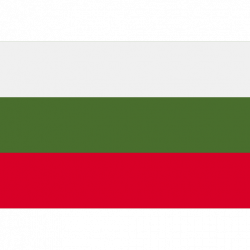
2021: Bulgaria, Legal Recognition of Bulgarian Sign Language
"21st of January 2021 was a big day for the Bulgarian Deaf Community and especially to those who have worked hard in pushing the Bulgarian Sign Language Act through over the last couple of years: the Bulgarian Sign Language (BGSL) was finally recognized as an official language in Bulgaria. (..)
The Deaf Community will now have all the rights that the new law gives them: to be able to teach Deaf children and students through Bulgarian Sign Language, to receive information through Bulgarian Sign Language and to be confident that they can always and everywhere use their language! However, the work has to continue with BGSL development work and the elaboration on BGSL educational resources. Once the Bulgarian Sign language is equal to the Bulgarian spoken language, opportunities for bilingual education for the Deaf will be initiated."
From: https://www.helpalliance.org/en/aktuelles/bulgarian-sign-language-officially-recognized/
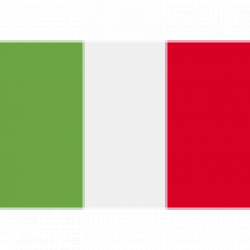
2021: Italy,Legal Recognition Italian Sign Language
On May 19, 2021, Italy officially recognized LIS (Italian Sign Language).
May 19, 2021, is a historic day: Italy bridged the serious delay that had led it to be the last of the countries in Europe not to have recognized its own national sign language.
After a decades-long struggle, disappointed hopes, battles in all locations, awareness campaigns, sit-ins, petitions, conferences, projects and massive street demonstrations and after this so complicated period, which has done nothing but bare and amplify the discrimination that deaf people experience every day, we have finally reached this very important result, a sign of civilization and an achievement not only for deaf people, but for all of Italy.
